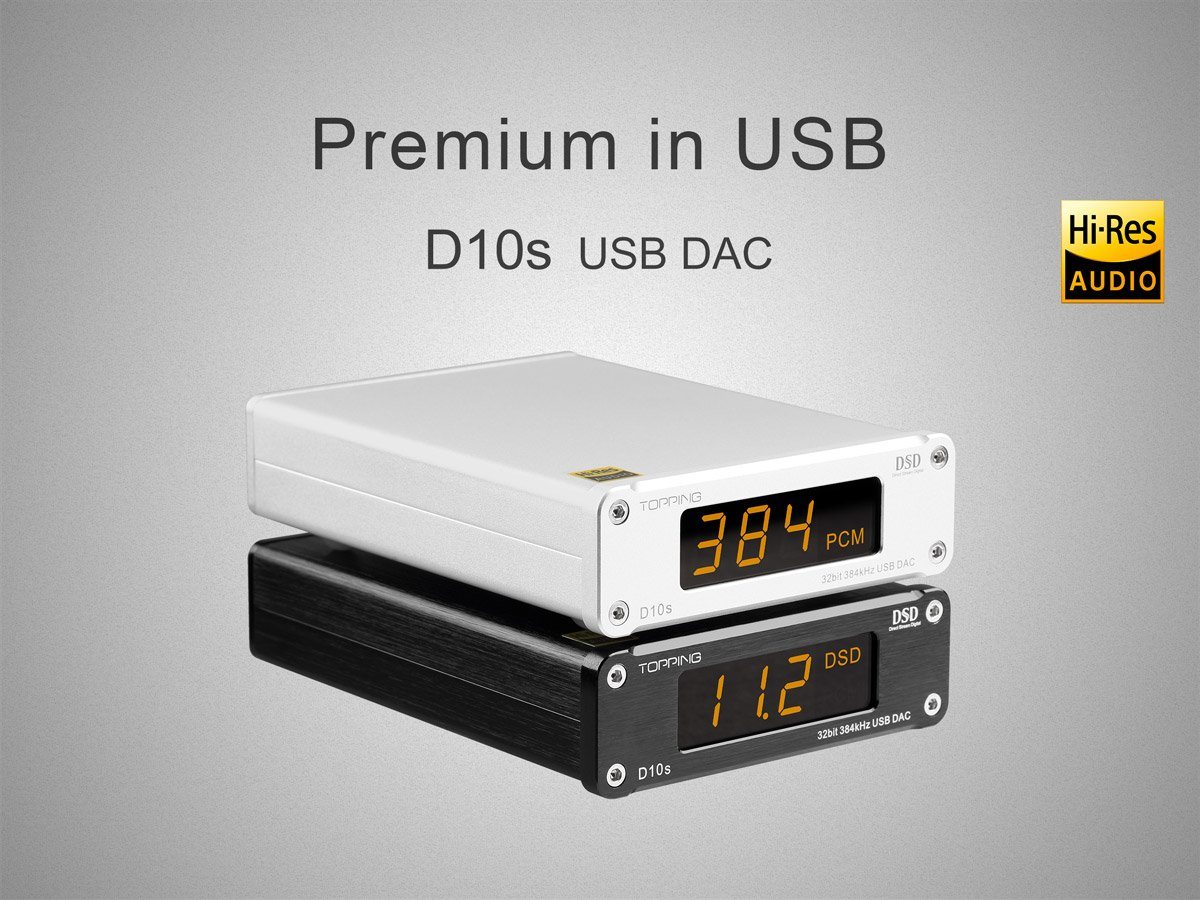Today TOPPING addressed its fans with this excellent release, the news of the release of the launch of the new D10s DAC.
If you regularly follow the latest happening in the audiophile world, you’ve probably heard of TOPPING. The company needs no introduction. Its DACs and AMPs have become ubiquitous lately and seen everywhere. The products offer exceptional value and outstanding performance measurements that exceed many of competing manufacturers’ best offerings.

So is TOPPING’s latest D10s DAC going to be one of their record-breaking, DACs? Or is it a small addition to the company’s DAC lineup. Is the D10s superior to the E30? And more importantly, what does the D10s bring to the table over the earlier D10? Let’s have a closer look.
TOPPING D10s vs. D10

The earlier D10 was an example of TOPPING’s initial products, a compact, tiny DAC that performed superbly while at the same time hitting its target by impressing its budget-minded consumers.

The D10 was definitely not one of TOPPING’s flagship DACs, but it offered “so much” performance while keeping “very low” a cost. This high price to performance ratio paved the way to TOPPING’s later higher-end DACs, such as the recent D90.
Meet The New TOPPING D10s DAC
Taking a look at the new TOPPING D10s, the first thing that comes to mind is the extreme resemblance of the new TOPPING D10s to the previous D10. The compact frame is built out of thick aluminum and has a respectable amount of heft to it. Unexpected at a DAC of its size.

The front is adorned with a retro-looking orange LED display that Many find helpful as it displays not only the chosen input and audio format but also the currently playing sample rate. Despite the low price, this is a nice-looking compact DAC.
A Look Under The Hood
As for DAC chip, TOPPING used a single ESS ES9038QM DAC chip inside the D10s. If the name seems familiar, it’s because TOPPING adopted two of those chips in a dual configuration in their excellent D50s DAC.

The ES9038QM DAC chip from ESS technologies is an outstanding performer with low power consumption. TOPPING utilizing a single chip in the D10s allows the DAC to be powered solely using USB, while at the same time enabling the THD+N @1kHz to reach an extremely low level of just 0.002%! Impressive!
XMOS XU208 USB Chip

TOPPING employed the latest XMOS XU208 USB chip for the USB decoding interface. While the USB interface is absolutely class 2 compliant (no need to install any drivers), installing the customized Thesycon ASIO drivers allows you to decode higher sample rates and DSD.
Supported Formats

The TOPPING D10s can decode up to 32-bit 384 kHz PCM and native DSD256 via USB, and up to 24-bit 192 kHz PCM and DSD64 via its optical/coaxial input.
Automatic Power On/Off Feature

Powered solely by USB, the TOPPING D10s can automatically power on/off simultaneously with your PC or laptop. This feature allows you to considerably conserve your device’s battery and remove any need to plug/unplug your DAC from your source.
USB To Optical/Coaxial Converter

One distinguishing feature that sets the D10s apart from any of the competition‘s offerings is its ability to convert its USB input to optical/coaxial output. This feature alone is worth the DACs asking price as it provides you with excellent compatibility and connectivity, allowing you to connect your DAC to a broader range of devices.
OP-AMP Rolling

The op-amp used in the D10s is both swappable and socketed. Therefore, professional users can use an IC extractor or pliers and swap the included op-amp with a different op-amp to change the sound.
Be careful, though, as swapping op-amps is definitely not a risk-free procedure, it can instantly destroy your DAC. On top of that, TOPPING doesn’t officially endorse swapping op-amps to users.
Color Options

The D10s is available in two different colors, Black and Silver. If you are not a fan of the Silver color, you can choose Black as it usually goes great with most devices.
Price
TOPPING announced the retail price of the D10s to be $99. Read the full tech specs & learn more about it here.




1 comment
Pedro Antao
Excelent document.
I am wondering how d10s work with iphone and imusic lossless and hi-def through the firewire/USB connection.
Do you have and info for this setup?
Cheers, Pedro
Leave a comment
All comments are moderated before being published.
This site is protected by hCaptcha and the hCaptcha Privacy Policy and Terms of Service apply.